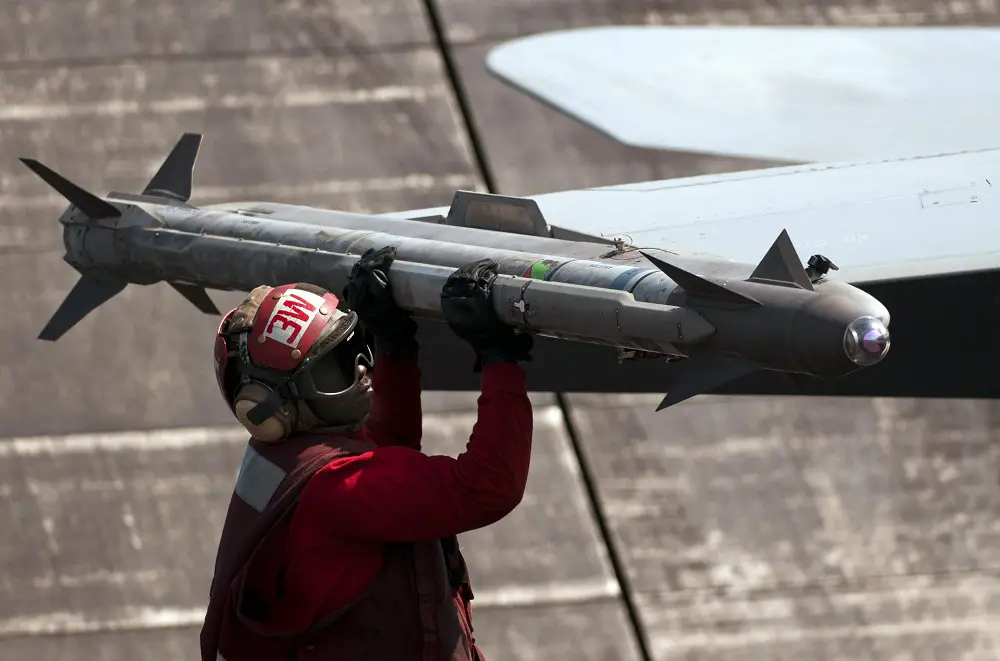The U.S. State Department has approved a significant Foreign Military Sale to the Government of Canada, involving the AIM-9X Sidewinder Block II+ and Block II Tactical Missiles. This deal, which includes various related logistics and program support elements, is valued at an estimated $264.6 million. Canada’s request comprises a comprehensive package of advanced missile systems and associated equipment. The order includes: 48 AIM-9X Sidewinder Block II+ Tactical Missiles, 120 AIM-9X Sidewinder Block II Tactical Missiles, 48 AIM-9X Sidewinder Block II Captive Air Training Missiles, 48 AIM-9X Sidewinder Block II Special Air Training Missiles, 4 AIM-9X Sidewinder Block II+ Tactical Guidance Units, 12 AIM-9X Sidewinder Block II Tactical Guidance Units and 8 AIM-9X Sidewinder Block II Guidance Units. Additionally, non-major defense equipment (non-MDE) included in the sale comprises Active Optical Target Detectors, KGV-135A COMSEC chips, missile containers, training aids, spares, support equipment, and missile software. The deal also covers extensive technical, engineering, logistical, and program support provided by both the U.S. government and contractors. The principal contractor for this sale will be RTX Corporation, based in Tucson, Arizona.
The AIM-9 Sidewinder, known as the “Air Intercept Missile,” is one of the most iconic and widely used air-to-air missiles in military history. First introduced to the U.S. Navy in 1956 and the Air Force in 1964, the AIM-9 has seen continuous evolution, ensuring its relevance in modern aerial combat. The missile’s longevity is a testament to its effectiveness, with newer variants like the AIM-9X Block II+ incorporating cutting-edge technology to maintain its edge on the battlefield. The Sidewinder’s design is characterized by its lightweight, compact structure with cruciform canards and tail fins. It utilizes a solid rocket motor for propulsion and features a continuous-rod fragmentation warhead, guided by an infrared seeker. The missile’s guidance system, developed in the 1950s, has been consistently upgraded to enhance its tracking capabilities. Modern versions can track targets from multiple aspects, not just from the rear, significantly increasing their operational flexibility. The missile’s seeker technology has evolved from the early uncooled seeker heads, which could only lock onto the heat signature of an aircraft’s engine exhaust, to advanced systems capable of all-aspect targeting. This has been made possible by incorporating cooling systems and more sophisticated sensors, allowing the missile to engage targets even in challenging environments.

The AIM-9X Sidewinder Block II+ and Block II variants represent the pinnacle of the missile’s technological evolution. These models incorporate several advanced features, including thrust vectoring for enhanced maneuverability and high off-boresight capabilities, enabling the missile to track and engage targets at extreme angles relative to its launch platform. The AIM-9X Block II, introduced in 2013, added a significant upgrade with its lock-on after launch (LOAL) capability, supported by a datalink. This feature allows the missile to be launched without a direct line of sight to the target, with guidance provided by the launching aircraft or another platform equipped with the necessary systems. This capability is particularly valuable for modern aircraft such as the F-35 and F-22, which can engage targets in a 360-degree sphere around the aircraft. The Block II+ variant further enhances these capabilities, making the AIM-9X a versatile weapon suitable for various combat scenarios. It is compatible with a wide range of modern fighter jets, including the F-15C Eagle, F-16 Fighting Falcon, F/A-18 Super Hornet, and the F-35 Joint Strike Fighter. Moreover, the missile can also be integrated into the National Advanced Surface-to-Air Missile System (NASAMS™), providing a short-range layer of defense against aerial threats.
Canada’s acquisition of the AIM-9X Sidewinder missiles represents a significant enhancement of McDonnell Douglas CF-18 Hornet (official military designation CF-188) air combat capabilities. The Hornet Extension Project (HEP) applies to entire fleet of 94 CF-188A/Bs and started in 2020. This will prolong the fighter’s parity and interoperability with NATO and civil aviation standards to 2032. The package further expands compatibility support with the longer ranged AIM-120D AMRAAM air-to-air missiles initially acquired in 2017. Phase Il of the HEP applies to a fleet of 36 x CF-188A/B airframes with the estimated longest remaining life. These upgrades were part of a package which include the delivery of: 50 x AIM-9X Sidewinder Block II tactical missiles, 38 x CA/APG-79(V)4 active electronically scanned array (AESA) radars, 38 x CA/APG-79(V)4 AESA radar A1 kits; 46 x F/A-18A wide-band RADOMEs;
Upgrades to the Advanced Distributed Combat Training System and On-going Technical assistance to support the upgraded jets. On March 8, 2024 Arcfield Canada was awarded a CA$211.6 million (US$157.3 million) sustainment contract to support and maintain the CF-18’s avionics weapons systems, supply parts and provide end-to-end supply chain services with the contract being effective on April 1, 2024.












